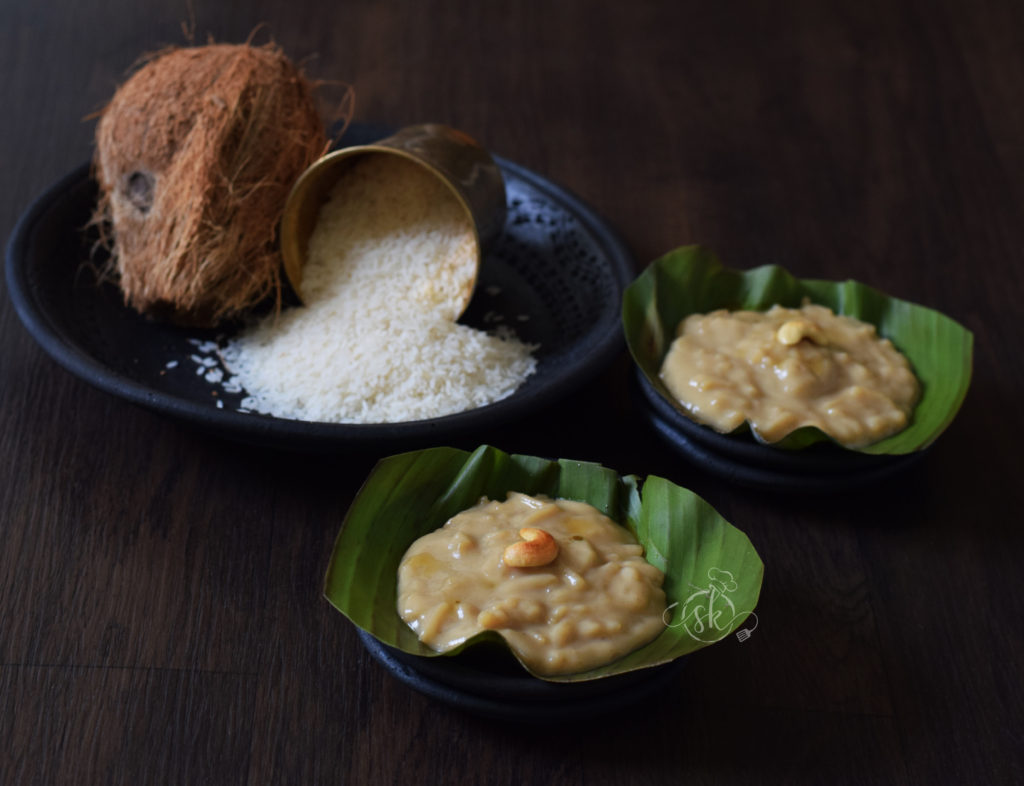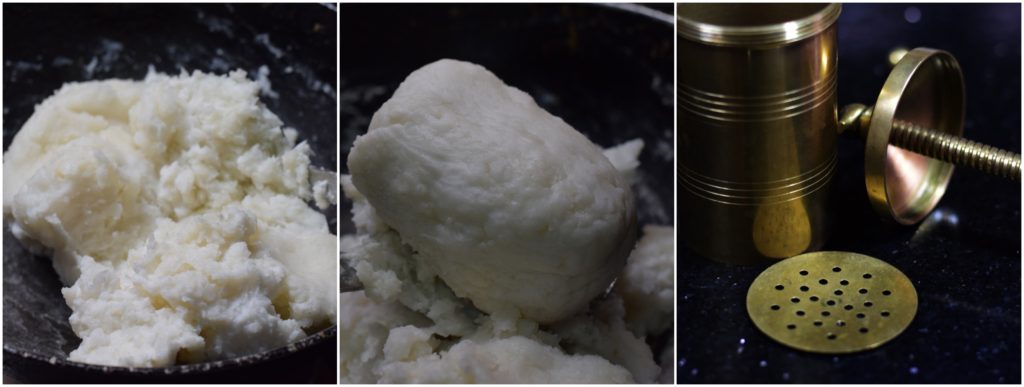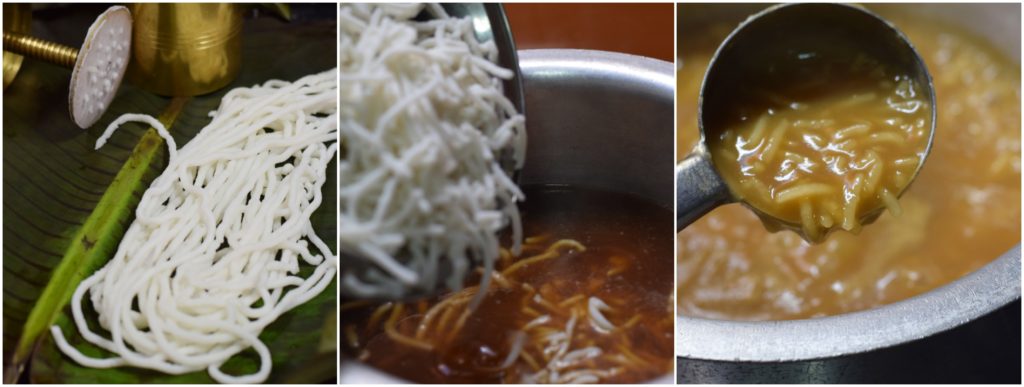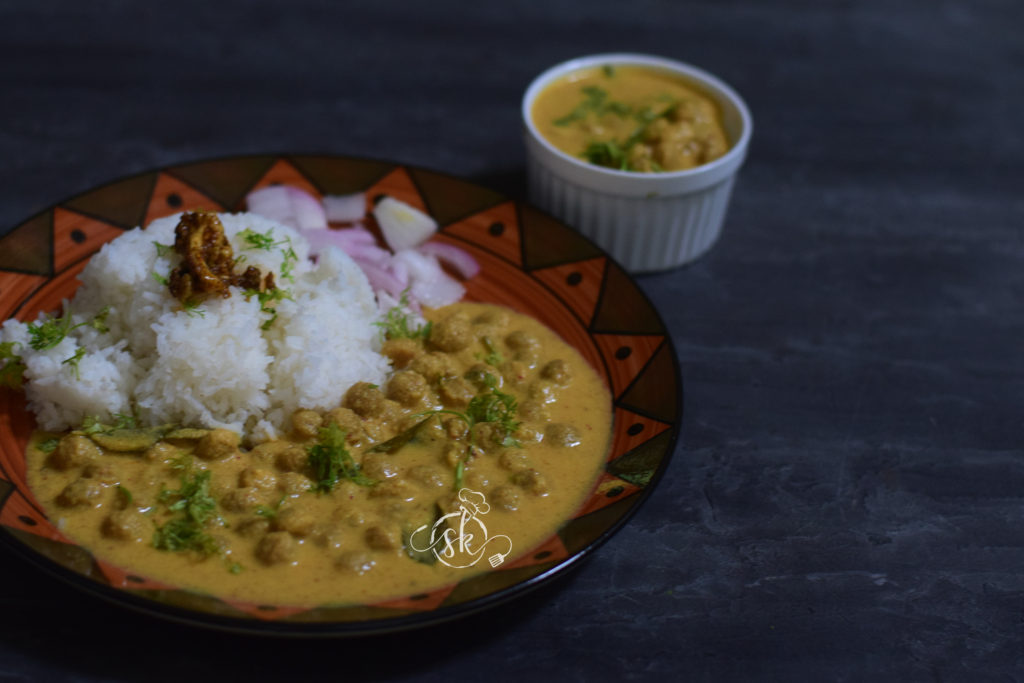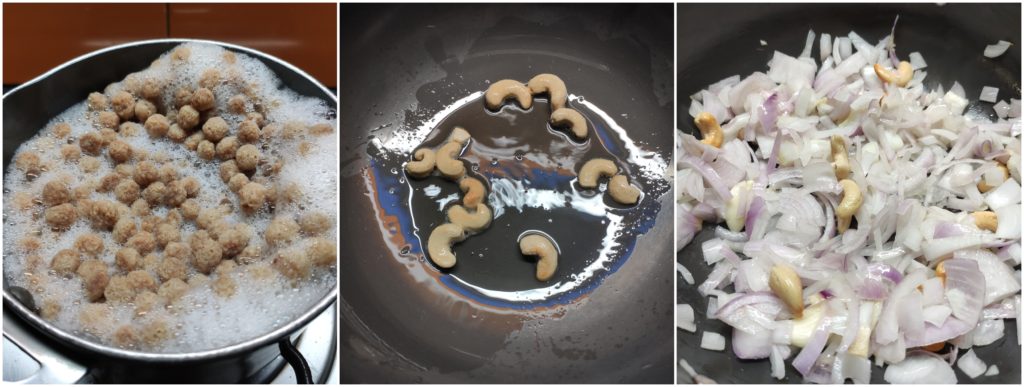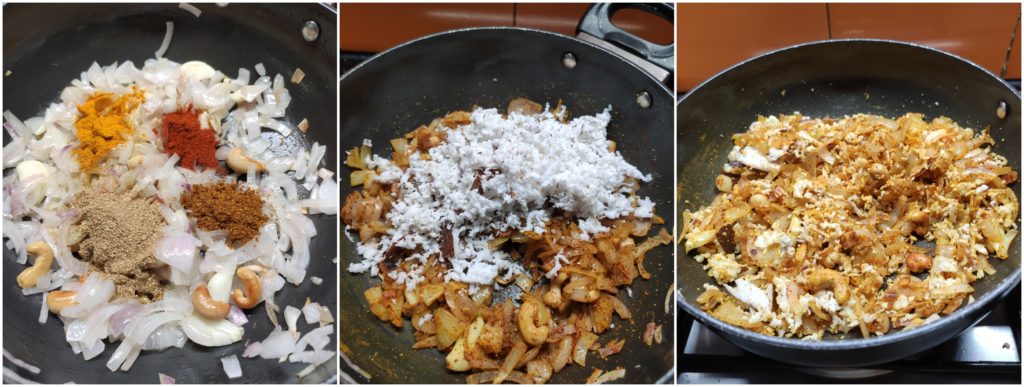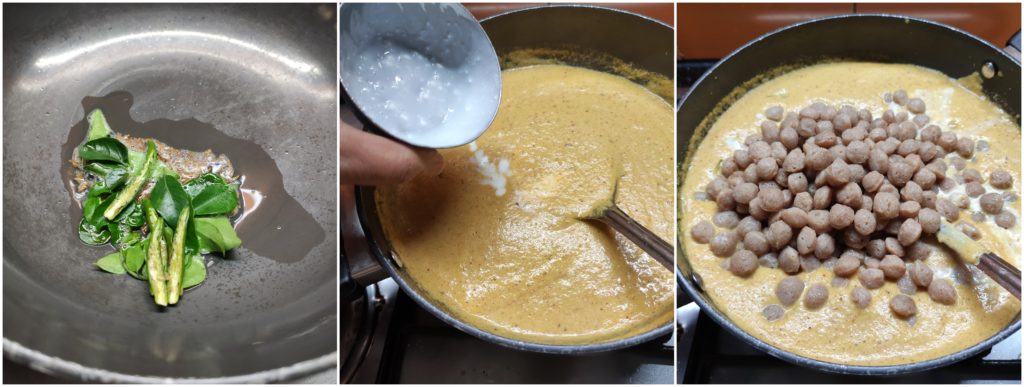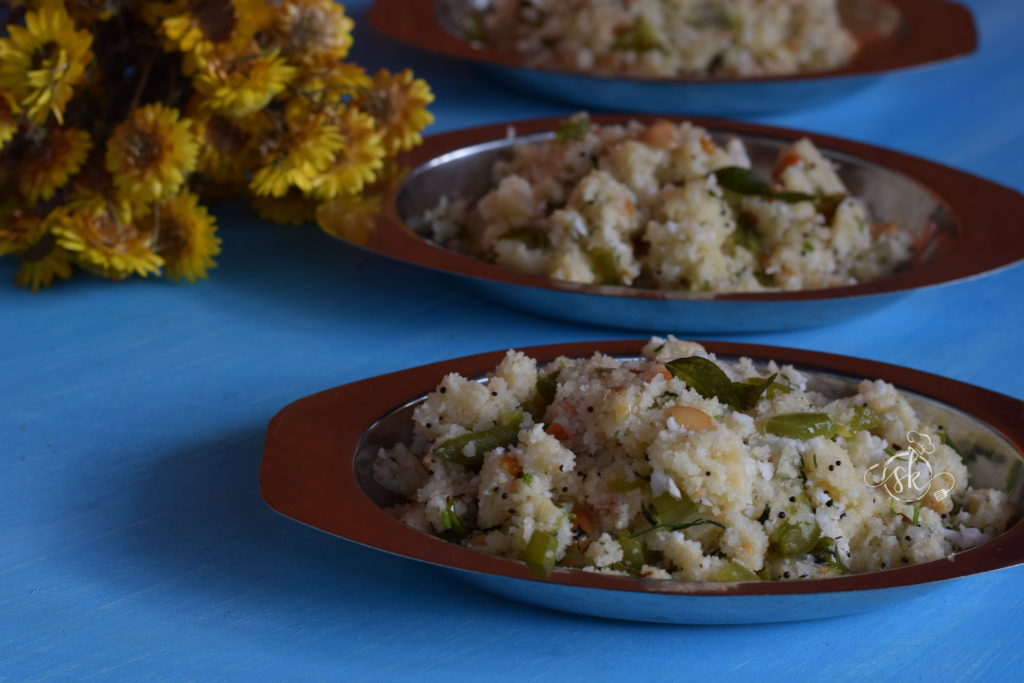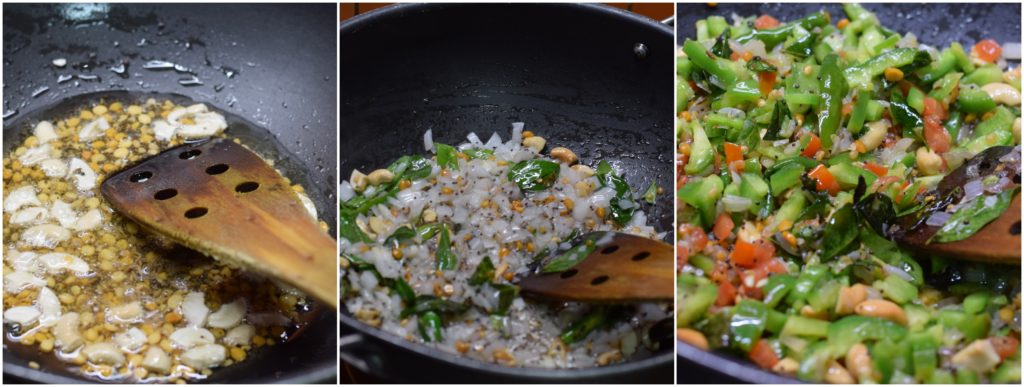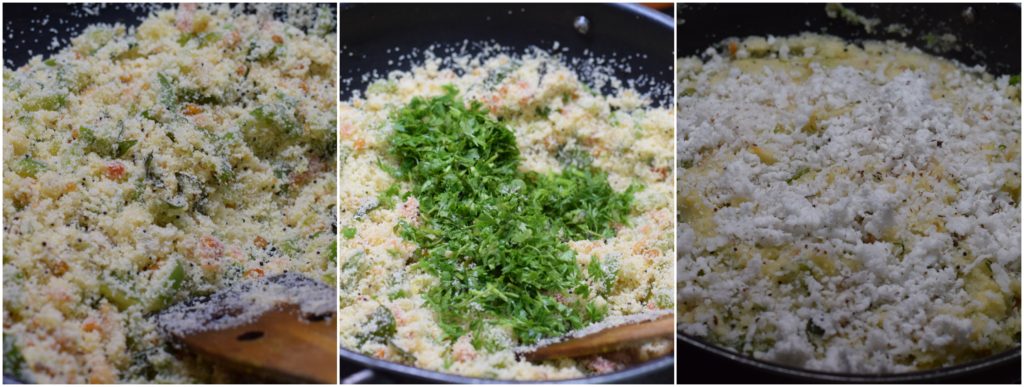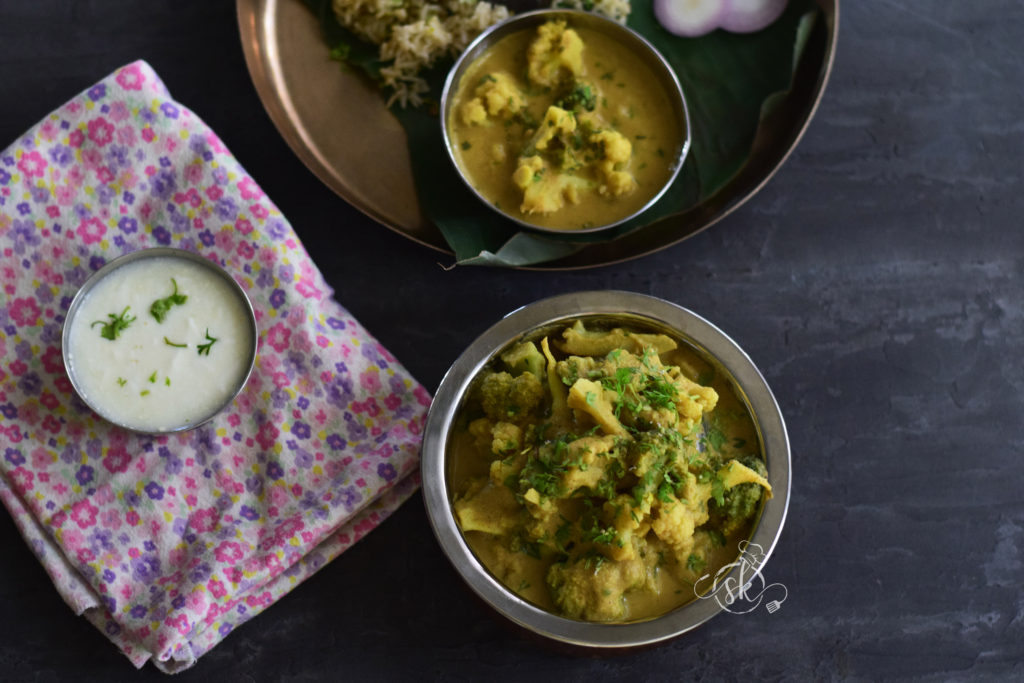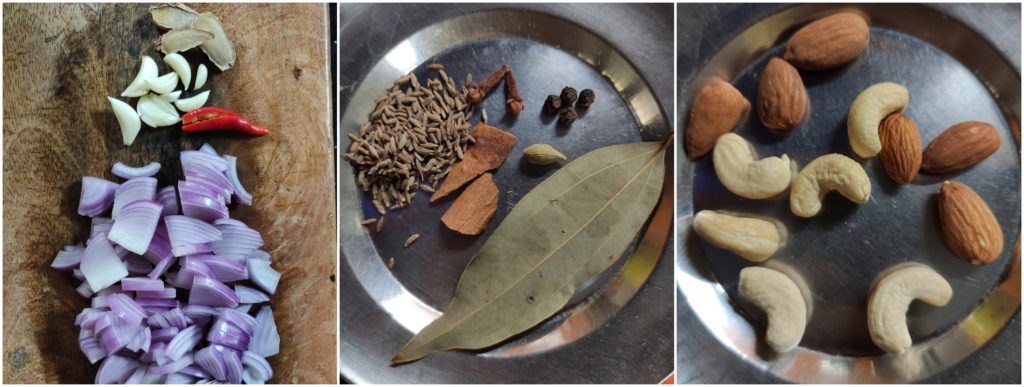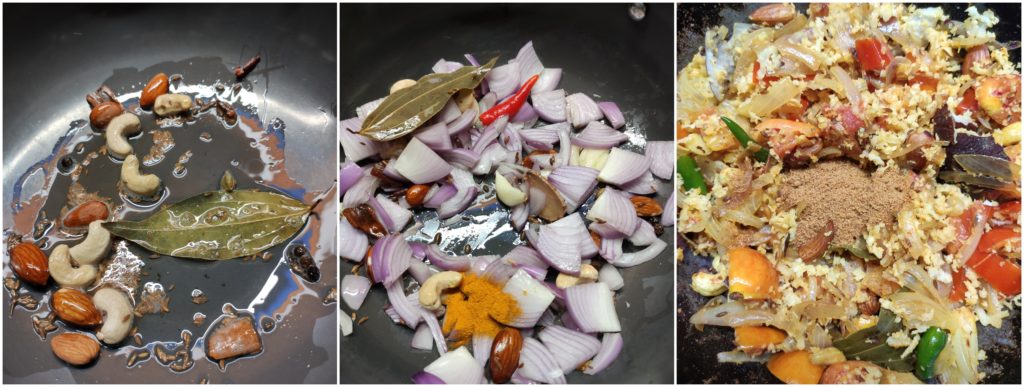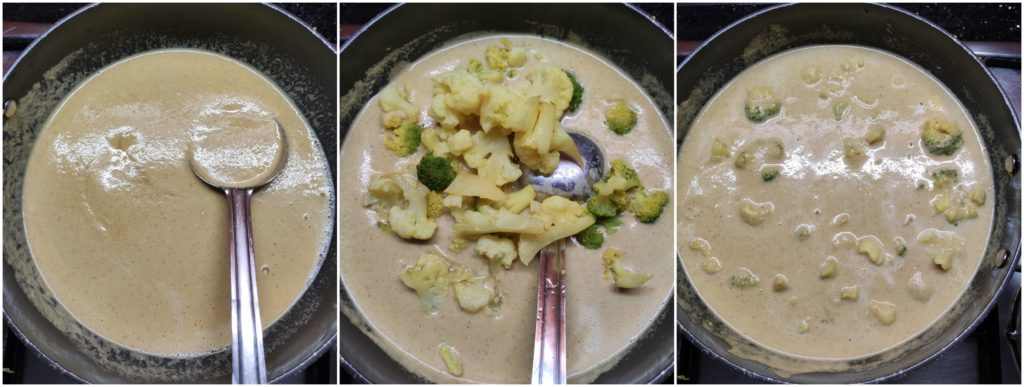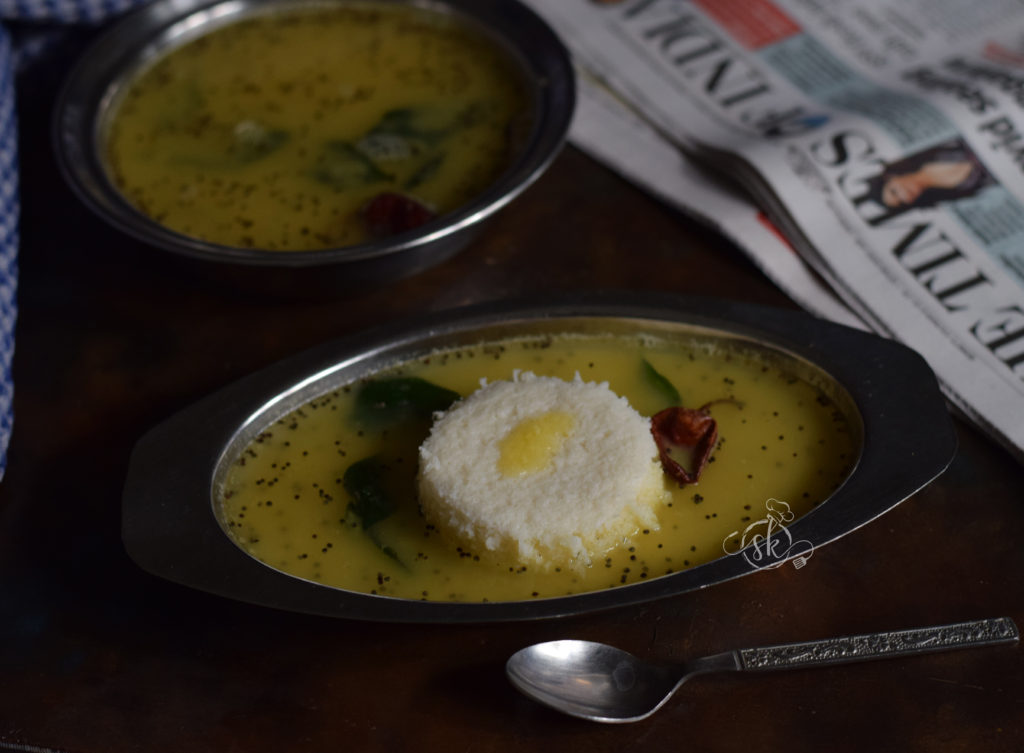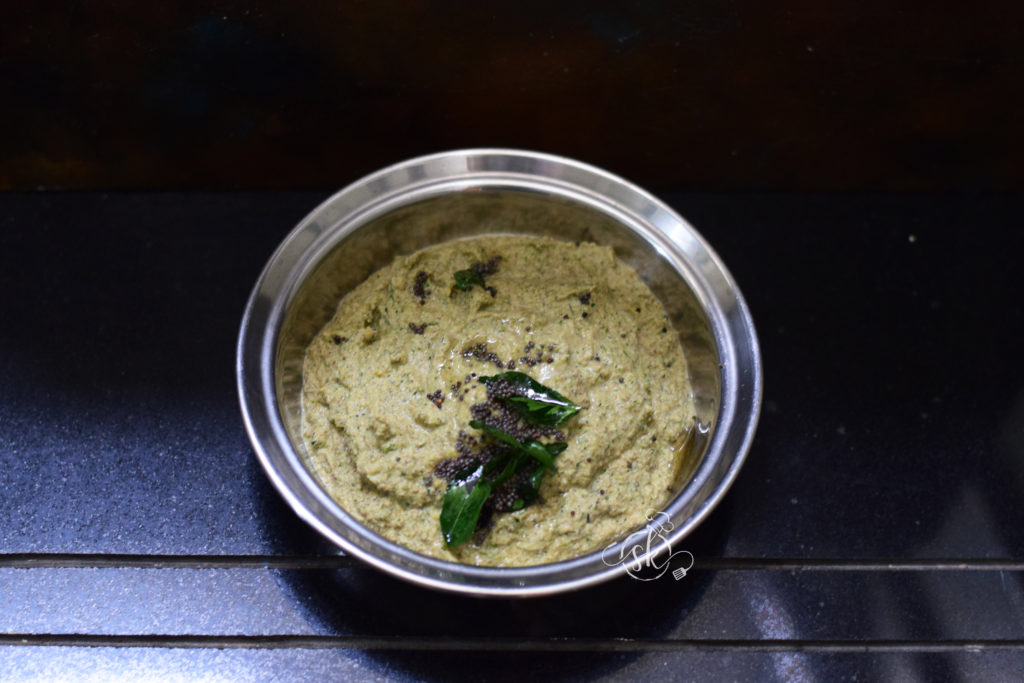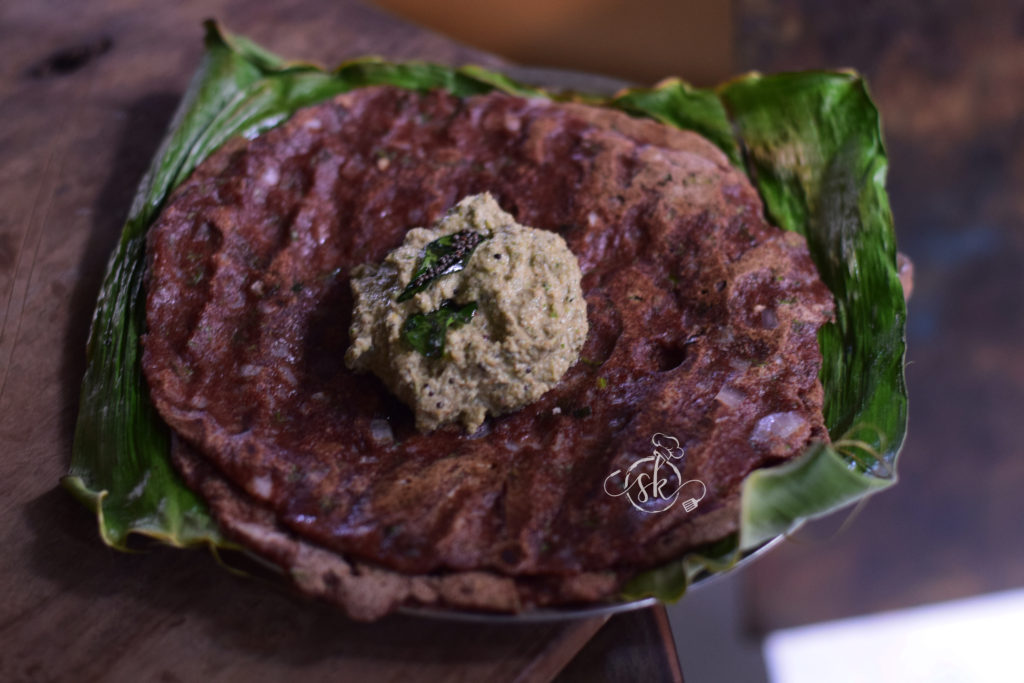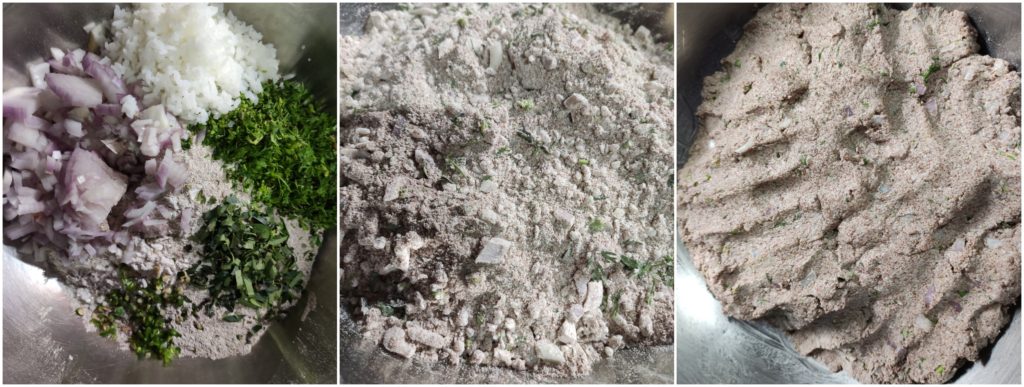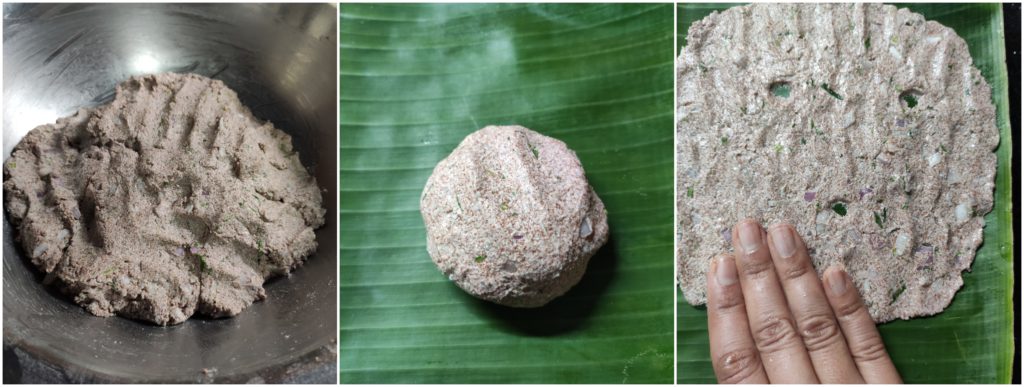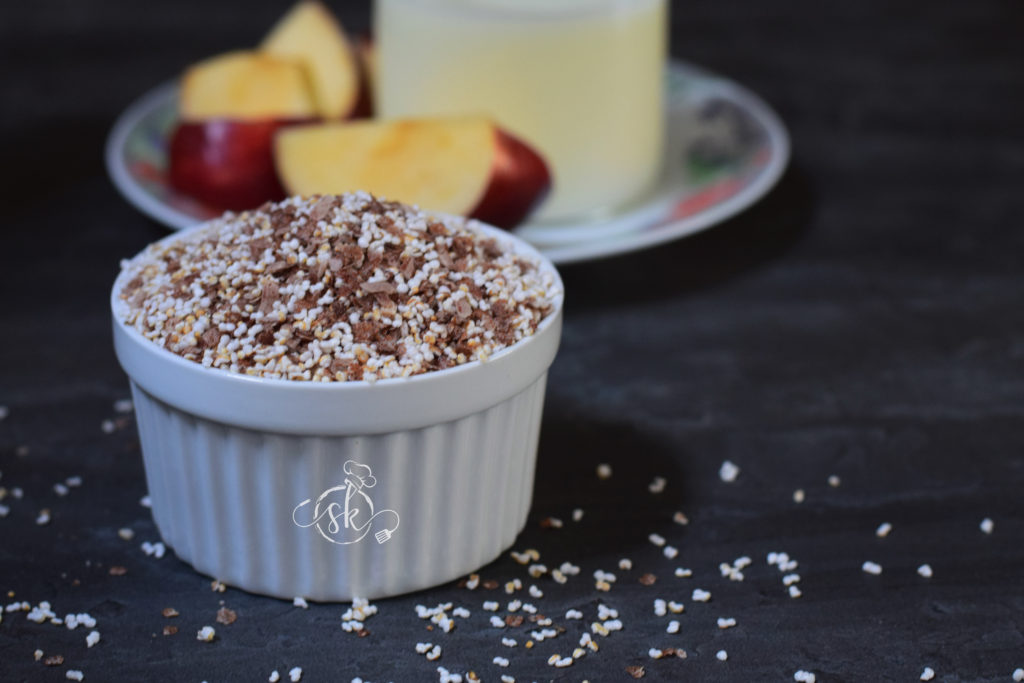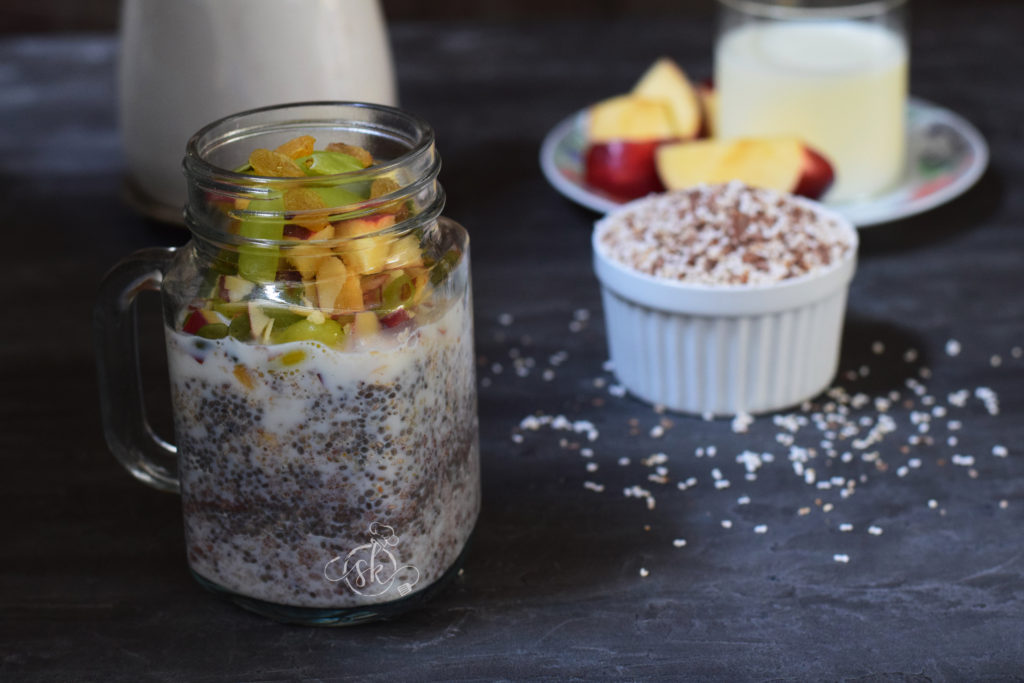It is a no rice, fermented idli using ground urad dal and steamed rava. The outcome is pillowy soft idlies. We avoid rice before the main pooja, which is taboo in our customs. Hence, it is a default breakfast option in our family, especially in our community, on festival days or any auspicious day.
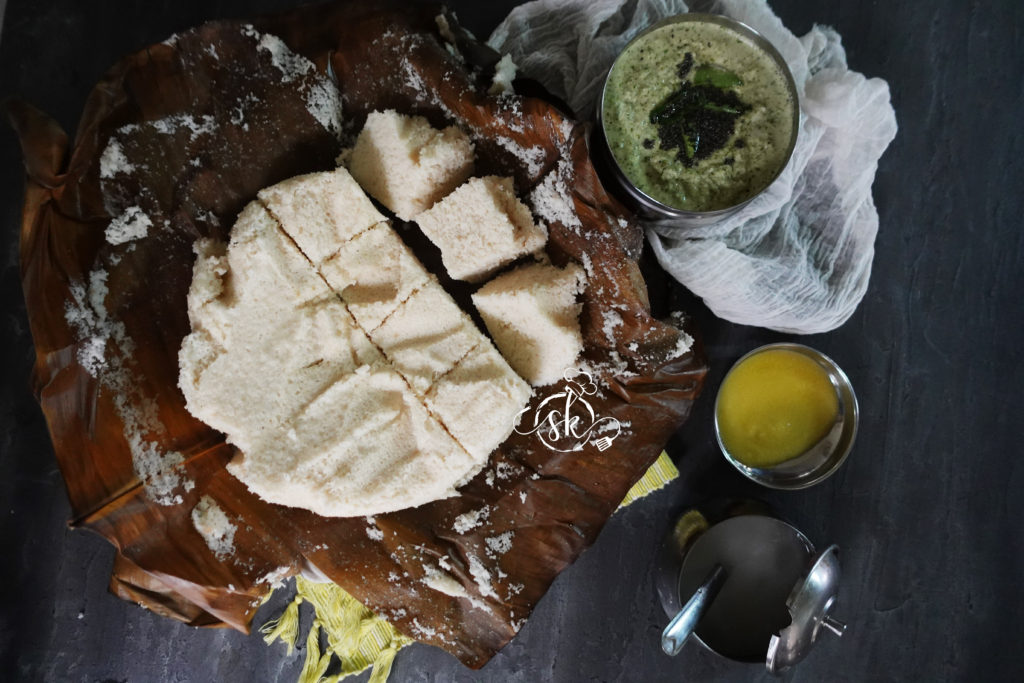
Here is the recipe, which we follow
Urad dal – 1 cup
Upma Rava / Bombay rava – 2 cups
Salt
Method:
-Wash urad dal and soak it for 3 to 4 hours.
-Grind soaked urad dal into fine paste by adding sufficient water.
-Now, take one cotton cloth, pour rava, and tie it like a potli/ packet.

-Take one idli steamer with water at the bottom. When water starts boiling, place the tied towel with rava and steam cook for 10 to 20 min in low heat.
-After 20 min, remove the towel, loosen the knot, spread the rava and cool it.

-Add cooled rava and required salt to urad dal paste and make a batter by mixing and adding sufficient water.
-Batter needs to be like regular idli batter and allow it to ferment acc to your climate.
-next day, prepare idli like regular idli or by using banana leaf or steel tumblers etc.

-If you are following the procedure like me, use wilted banana leaf, pour the batter and steam for 30 minutes or more, according to the thickness.

-Serve with chutney, thovve, sambar or menthe kodilu (methi sambar).

